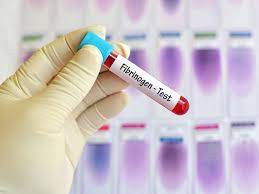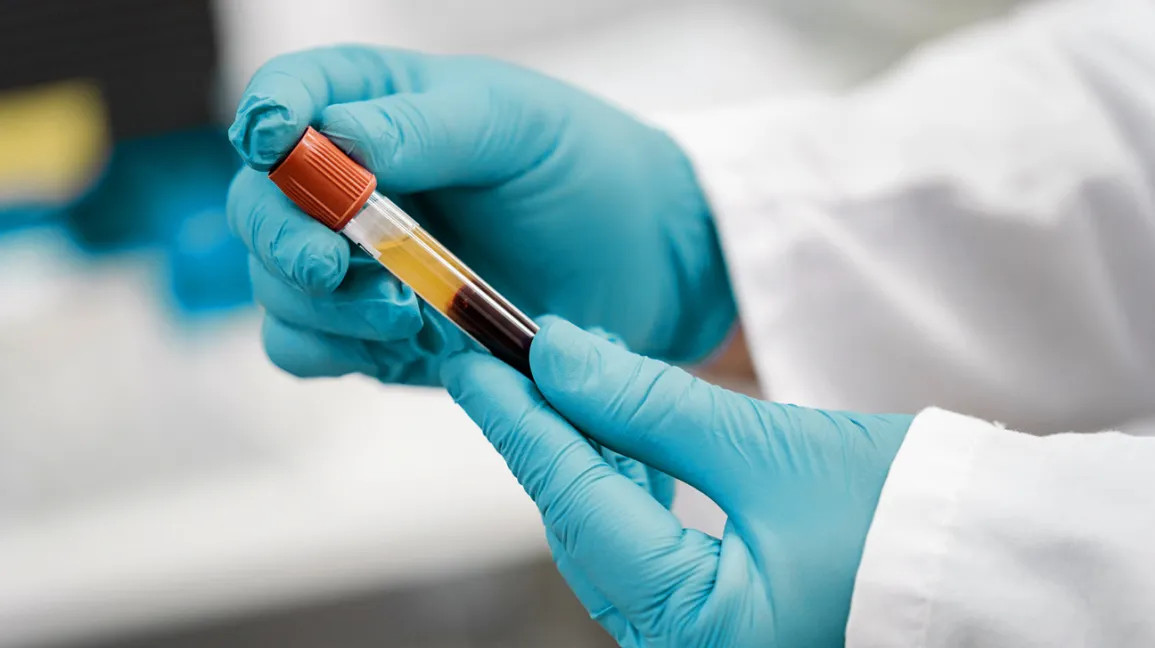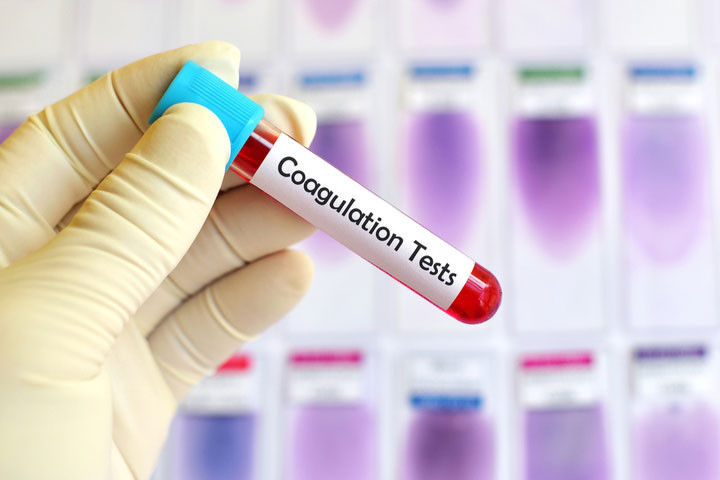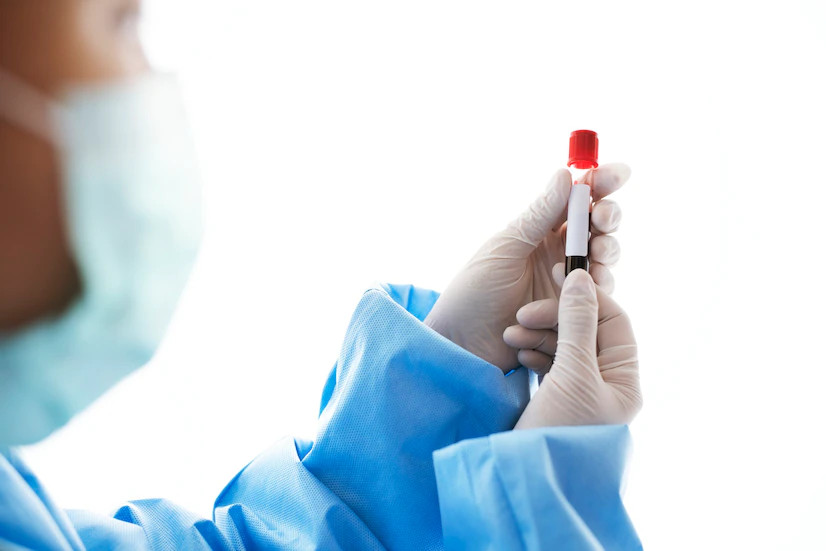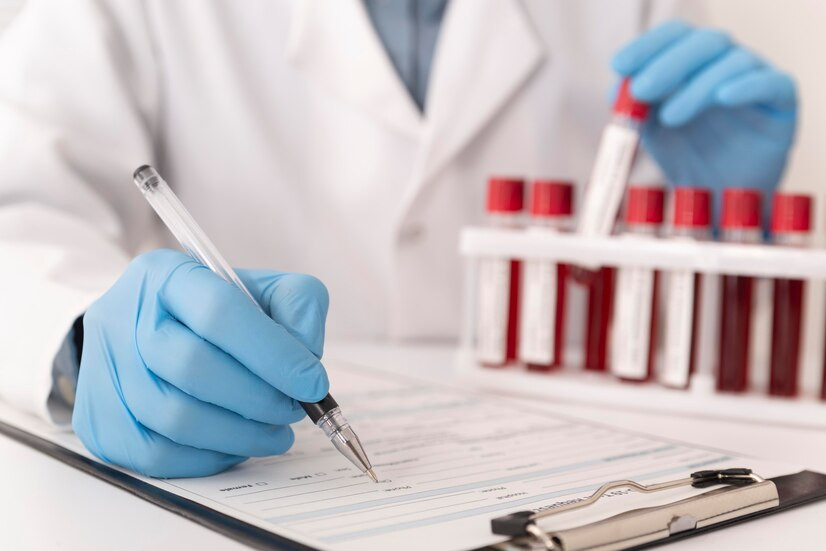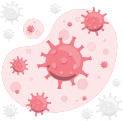Definition
Fibrinogen, also known as clotting factor I, is a protein found in the blood, produced by the liver, that plays a crucial role in the formation of blood clots. The concentration of fibrinogen in the blood can be determined through a fibrinogen test, which can be conducted on both children and adults.
Fibrinogen is essential in the coagulation process. When released into the bloodstream, it dissolves and is then converted into fibrin threads, which help form blood clots. This process is vital for stopping bleeding. Therefore, having an adequate level of fibrinogen is necessary for the stability of blood clots. If the fibrinogen level in the blood is too low, excessive, or improperly functioning, it can impair the body's ability to form effective clots, leading to recurrent or prolonged bleeding, which can result in significant blood loss.
Indication
Several diseases and medical conditions may warrant a fibrinogen test, including:
-
Suspected bleeding disorders with symptoms such as:
-
Bleeding gums
-
Excessive bleeding
-
Widening bruises
-
Frequent nosebleeds
-
Repeated miscarriages (more than 2 times)
-
Gastrointestinal bleeding, ruptured spleen, or head bleeding
-
Coughing up blood
-
Presence of blood in the urine or stool
-
-
Evaluating risk factors for heart disease and stroke
-
A family history of bleeding or blood clotting disorders
-
Medical conditions like:
-
Liver disorders
-
Disseminated Intravascular Coagulation (DIC), which involves blood clots forming in various areas of the body
-
-
Abnormal results from other blood coagulation tests, including:
-
Prothrombin Time (PT)
-
Activated Partial Thromboplastin Time (APTT)
-
-
Monitoring patients undergoing certain drug therapies
Contraindication
There are no specific conditions or diseases that contraindicate this test. It is suitable for everyone to undergo the fibrinogen test.
Preparation Before the Test
No special preparation is necessary before undergoing the fibrinogen test. However, it is important to follow some guidelines to ensure that the test results accurately reflect your condition:
-
Avoid consuming foods high in fat, fish oil, or fiber before the test.
-
Drink plenty of water to stay hydrated.
-
Refrain from smoking for a few days prior to the test.
-
Inform your doctor if you are currently taking any of the following medications:
-
Antiplatelet drugs (e.g., ticlopidine), which prevent platelet aggregation
-
Cholesterol-lowering drugs containing fibric acid
-
Anticonvulsants, including phenobarbital and valproate acid
-
Contraceptive pills
-
These medications can lower fibrinogen levels in the blood, potentially skewing the results and not accurately reflecting your actual fibrinogen levels.
Test Procedure
The fibrinogen test is performed using a blood sample collected from a vein, usually from the arm crease area. The skin over the collection site will be cleaned with cotton or an alcohol swab to disinfect the area. The healthcare provider will typically draw about 0.3 to 0.5 mL of blood for the test.
Once the blood is collected, it will be placed into a special tube and sent to a laboratory for analysis. The test results are usually available within a few days after the sample arrives at the laboratory.
Normal and Abnormal Values
The normal fibrinogen test range is typically between 200-400 mg/dL. However, this range may vary depending on the specific procedures and equipment used by each laboratory. It is important to consult your doctor for a detailed explanation of your test results, as individual laboratories may report results differently.
Fibrinogen levels are considered abnormal if the test results fall outside the normal range. In most cases, fibrinogen test results are compared with other blood coagulation tests, such as Prothrombin Time (PT) and Activated Partial Thromboplastin Time (APTT). This comparison helps evaluate the severity of any potential disorder and identify the underlying cause of blood clotting issues.
Results and Recommendations (Follow-up Tests)
Normal
If your fibrinogen test results fall within the normal range, it means that your fibrinogen levels are functioning properly. This indicates that when an injury occurs, fibrinogen will work optimally to form blood clots as needed. However, it is still important to compare the fibrinogen test results with other blood coagulation tests, like PT and APTT, to ensure that clotting mechanisms are fully intact.
Low
If your test shows that fibrinogen levels are below the normal range, this suggests that your body has insufficient fibrinogen. A reduction in fibrinogen can impair blood clot formation, making it harder for your body to form stable blood clots when needed.
Low fibrinogen levels can result from various medical conditions, including:
-
Genetic conditions that affect fibrinogen production
-
Liver cirrhosis
-
Cancer
-
Severe malnutrition
Recently low fibrinogen levels might occur due to:
-
Frequent large blood transfusions
-
Disseminated Intravascular Coagulation (DIC), a condition where blood clots form excessively throughout the body
-
Abnormal fibrinolysis, a process that breaks down blood clots, which can lead to an increased risk of uncontrolled bleeding
To pinpoint the cause of low fibrinogen levels, your doctor will conduct a thorough evaluation, including a review of your symptoms, medical history, and family history. Further tests may be recommended, such as:
-
Additional clotting factor tests (PT and APTT)
-
Liver function tests
-
Cancer markers
High
Certain conditions can result in higher than normal fibrinogen levels, including:
-
The body’s response to injury, infection, or inflammation
-
Pregnancy
-
Aging
-
Obesity
-
Chronic diseases such as diabetes, cancer, kidney disease, or arthritis
Elevated fibrinogen levels can increase the risk of excessive blood clot formation, which may lead to clots blocking blood flow in organs like the brain, lungs, or heart. While elevated fibrinogen can suggest an underlying health issue, it is not specific to any one condition and may not pinpoint the exact cause of disease or damage to organs.
In most cases, high fibrinogen levels are temporary and return to normal once the underlying condition is treated effectively. The doctor will correlate high fibrinogen test results with your symptoms, medical history, and physical exam findings to determine the appropriate next steps. Further testing may be necessary based on your specific health condition.
Consult the Right Doctor
Abnormal fibrinogen test results indicate an underlying health issue that needs attention. It is important to consult with a healthcare provider to determine the exact cause of the abnormal results and to guide the next steps for diagnosis and treatment.
Looking for more information about laboratory, radiology, and other examination results? Click here!
- dr Hanifa Rahma
Fibrinogen Test – Cleveland Clinic. (2022). Retrieved 16 July 2022, from https://my.clevelandclinic.org/health/diagnostics/22791-fibrinogen-test
Brenaan, D. (2021). What Is a Fibrinogen Blood Test. WebMD. Retrieved 16 July 2022, from https://www.webmd.com/a-to-z-guides/what-is-fibrinogen-blood-test
Fibrinogen Blood Test – Mount Sinai. (2022). Retrieved 16 July 2022, from https://www.mountsinai.org/health-library/tests/fibrinogen-blood-test
Underwood, C. (2021). Fibrinogen Activity Test. Healthline. Retrieved 16 July 2022, from https://www.healthline.com/health/fibrinogen
Fibrinogen – Labcorp. (2022). Retrieved 16 July 2022, from https://www.labcorp.com/help/patient-test-info/fibrinogen
Fibrinogen – Testing.com. (2022). Retrieved 16 July 2022, from https://www.testing.com/tests/fibrinogen/


